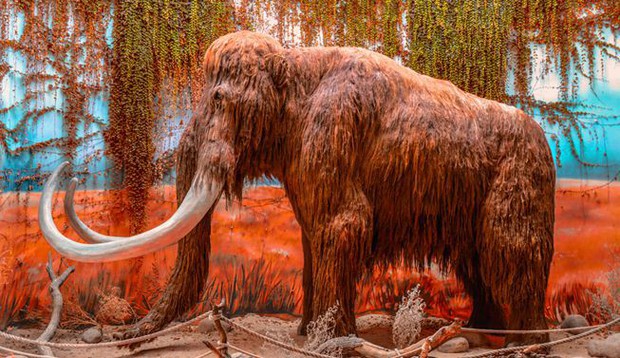Reviving the mammoth – the largest elephant that ever existed on Earth is an ambitious science project. But is it really good to revive a species that has been extinct for so long?
Although it was extinct over 10,000 years ago, scientists are still working hard to find different ways to bring the mammoth back to life.
The question is: why does science have to put so much effort into reviving this species? Why not other creatures, like dinosaurs. What was the role of the mammoth really?
Because science understands mammoths more than you think
Beyond many other prehistoric animals, the mammoth was the animal that humans can most understand from the fossil record. For example, the lifespan of the mammoth, determined by the number of circles in the ivory (similar to wood grain), or the role of the mammoth in the lives of prehistoric humans was of crucial importance.
Since we know a lot about mammoths, the more we want to conquer them. And the way to learn more about mammoths is to resurrect them.
Risen from the “dead”
It must be said that resurrection of a mammoth is a very difficult task, if not impossible. Scientists have developed many different methods to revive this giant elephant. Most notable is the attempt to clone the gene or alter the genetic makeup of the Asian elephant from the mammoth genome.
In 2011, a team of scientists from Japan, Russia and the United States used cold-stored mammoth DNA to implant it directly into an African elephant egg.
However, this method presents many difficulties. Because even with the help of ice, but the genetic cells have broken down over time.
Professor George Church, professor of genetics at Harvard University (USA), said: “The extremely powerful effects of radiation over ten thousand years have definitely caused genes to break down into pieces. Work.”
Professor George Church’s team then carefully implanted mammoth genes into genetic cells of Asian elephants using CRISPR technology. They found that the mammoth gene could help elephants to increase blood circulation normally at low temperatures and improve the growth of fat and hair – abilities that allow the body to adapt to the cold.
Once these traits appear in stem cell tissue, scientists will begin to create a new embryo and grow it in an artificial uterus.
Extinct or Risen?
The reinstatement of a creature that became extinct over 10,000 years ago raises a series of questions about humanity and the purpose of reviving them.
The issue of the rebirth of extinct organisms is an important part of the fight against climate change. Environmentalist Sergey Zimov said returning mammoths to the environment could stimulate the growth of polar tundra plants.
Know that grasslands are the best place to sequester carbon from the air. Plus, it helps winter stay longer and reduces summer ice melt. As a result, the amount of carbon released into the atmosphere will be reduced.
Of course, this is just an extremely ideal hypothesis. “We really couldn’t imagine how they would live and communicate with the environment when we resuscitated the mammoths,” said biologist Helen Pilcher. Are they good? It will take a long time for this assumption to work. “
Plus, while science can revive a mammoth, a hard truth cannot change: it will take more than half a century just to help a herd of mammoths live safely in the world.
But even so, the technical measures used to revive mammoths could offer good protection for today’s endangered species. The most typical example is the project of Professor George Church who succeeded in protecting the North American black weasel from the danger of extinction due to inbreeding.
This regeneration project also has good and bad sides. On the one hand, primitive elephants will greatly contribute to biodiversity. However, scientists fear that the mammoth’s relaunch could upset the ecological balance, affecting a number of other organisms.
And even biologist Stanley Temple of the University of Wisconsin (USA) frankly said, “After all, the act of resurrection only helps science show. Think about it, if you resurrect the elephant. After successful sucking, urgent action to protect endangered species will become meaningless. Many species of creatures will go extinct because everyone believes that science has the ability to revive them once.



